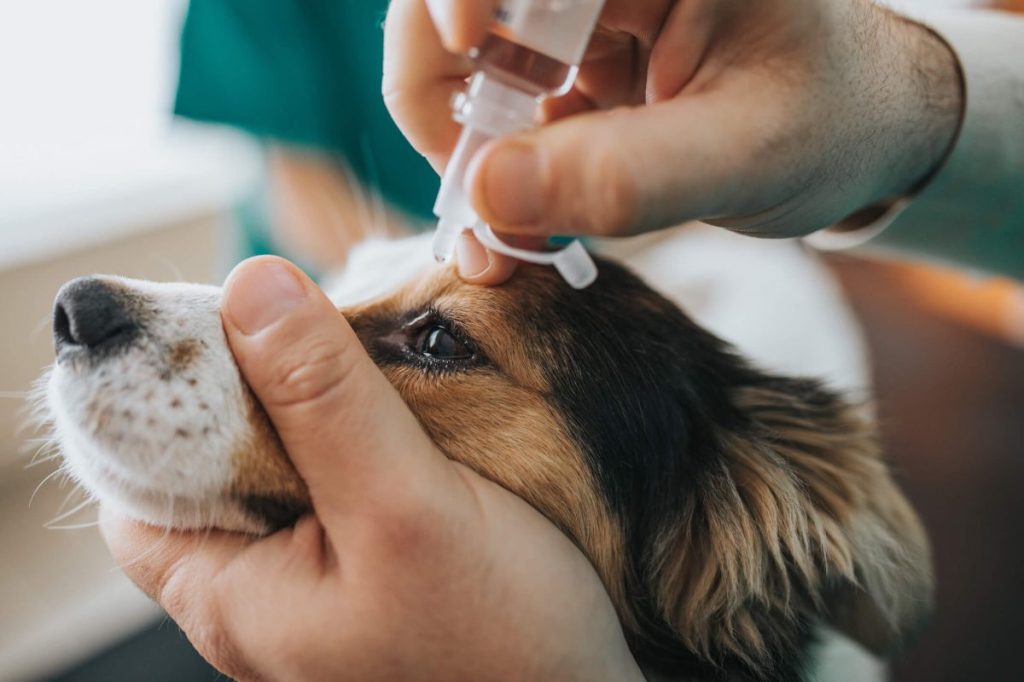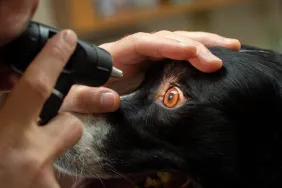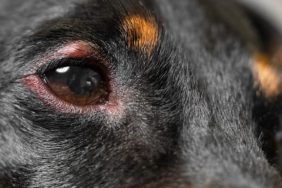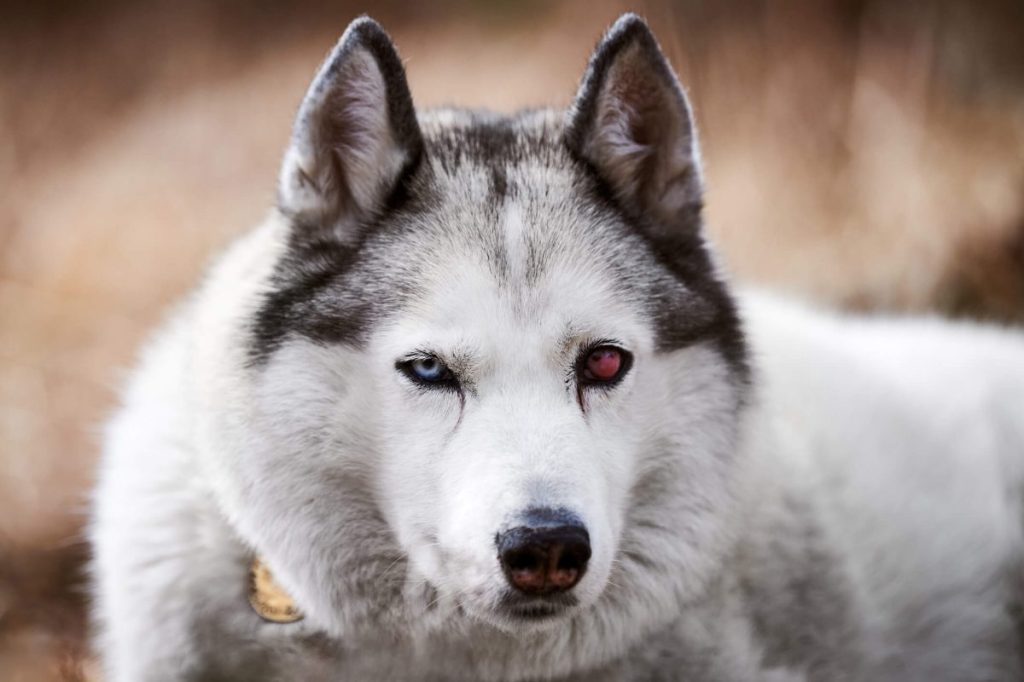Scleritis in dogs is an inflammatory condition affecting the sclera — the white outer layer of the eyeball. The sclera is a dense, fibrous tissue that provides structural support and protection to the eye. When this tissue becomes inflamed, it can cause redness, swelling, and discomfort in affected dogs. While it is less common than some other ocular diseases, scleritis can be severe and potentially vision-threatening.
Here’s what you should know about the symptoms, causes, and treatments for the disease in dogs.
Symptoms of scleritis in dogs

The most common symptoms of scleritis in dogs are:
- Redness and swelling
- Pain
- Tearing and discharge
- Color changes
- Vision problems
- Behavioral changes
Scleritis can be broadly categorized into two main types: anterior scleritis and posterior scleritis. Each type is further classified based on specific characteristics and manifestations.
- Anterior scleritis: Anterior scleritis involves inflammation of the front part of the sclera. This type is more common and is often easier to diagnose due to its visible signs.
- Posterior scleritis: Posterior scleritis affects the back part of the sclera. The inflammation can extend to the structures within the eye, leading to more serious complications. This type is more challenging to diagnose due to its location and the subtler clinical signs.
It is important to note that while scleritis primarily affects the deeper layers of the sclera, there are related conditions that differ significantly in severity and impact, such as necrotizing scleritis and episcleritis. Necrotizing scleritis is a particularly severe form of scleritis, characterized by intense inflammation that leads to tissue necrosis — or, put differently, tissue death. This condition is serious and requires prompt, aggressive treatment to avoid severe complications. In contrast, episcleritis is a separate and much milder condition, involving inflammation of the episclera — the thin layer of tissue between the sclera and the conjunctiva.
Causes of scleritis in dogs
Scleritis in dogs can arise from various underlying issues, and identifying the root cause is essential for effective treatment. The potential causes include:
- Immune-mediated conditions: Autoimmune disorders are a common cause of scleritis in dogs. These conditions cause the body’s immune system to mistakenly attack its own tissues, including the sclera.
- Infections: Bacterial, viral, fungal, or parasitic infections can invade the sclera and lead to inflammation. Common pathogens include Staphylococcus, Streptococcus, and Aspergillus species.
- Trauma: Physical injury to the eye — whether from an accident, fight, or foreign object — can damage the sclera and result in inflammation.
- Systemic diseases: Certain systemic diseases — such as Lyme disease, ehrlichiosis, and systemic lupus erythematosus — can have ocular manifestations, including scleritis.
- Neoplasia: Tumors, both benign and malignant, can infiltrate the sclera and cause inflammation.
- Idiopathic: In some cases, the exact cause of scleritis may not be identified, and it is then termed idiopathic.
When it comes to diagnosing scleritis in your dog, it’s important to consult a veterinarian who can perform a comprehensive eye examination. This exam typically includes a detailed look at your dog’s medical history, as well as specific tests to evaluate eye health. Your vet might use tools like an ophthalmoscope to inspect the internal structures of the eye or a slit lamp to get a closer look at the cornea and sclera. Additionally, they might perform a Schirmer tear test to check tear production and fluorescein staining to identify any corneal ulcers.
Sometimes, diagnosing scleritis can be tricky, as its symptoms can mimic other eye conditions. Therefore, your veterinarian may recommend additional tests such as blood work, cultures, or even imaging studies like an ultrasound or MRI to rule out other underlying issues. If an immune-mediated condition is suspected, they might also suggest a biopsy.
Treatments for scleritis in dogs

Treatment for scleritis in dogs depends on the underlying cause and the severity of the condition. Some therapeutic approaches include:
- Corticosteroids: Corticosteroids are often the first line of treatment for scleritis. You can administer these anti-inflammatory medications as eye drops, oral tablets, or injections, depending on the severity of the condition. Prednisone and dexamethasone are commonly used corticosteroids in veterinary medicine.
- Nonsteroidal anti-inflammatory drugs (NSAIDs): For dogs who cannot tolerate corticosteroids or in cases where additional anti-inflammatory control is needed, NSAIDs such as carprofen or meloxicam may be prescribed.
- Immunosuppressive agents: In cases where scleritis is immune-mediated or does not respond to corticosteroids and NSAIDs, stronger immunosuppressive drugs like cyclosporine or azathioprine may be necessary. These medications help suppress the immune system’s abnormal response, reducing inflammation.
- Topical medications: Besides systemic treatments, topical medications can provide direct relief to the affected eye. Your vet may recommend antibiotic or antifungal eye drops or artificial tears to maintain eye moisture and comfort.
In many cases, if scleritis is diagnosed early and treated aggressively, the prognosis can be quite favorable. However, if left untreated or if the underlying cause is a more severe systemic issue, the prognosis may be more guarded, potentially leading to complications such as vision loss or the spread of inflammation to other parts of the eye. It’s essential to work closely with your veterinarian or a veterinary ophthalmologist to monitor your dog’s response to treatment and adjust the care plan as needed. As such, regular follow-ups and adhering to the prescribed treatment regimen are vital for achieving the best possible outcome for your pet.













